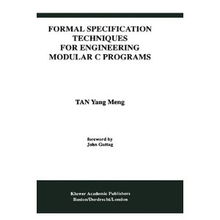Content:
Fishing in river沟, or small streams, can be a serene and rewarding experience. Whether you're a seasoned angler or a beginner looking to explore the waters, mastering the art of river沟 fishing involves understanding the nuances of bait usage and technique. In this article, we'll delve into the world of river沟 fishing, offering valuable tips and tricks for selecting the right bait and mastering the art of its application.
Understanding River沟 Fishing
River沟, often characterized by their narrow and winding paths, can be challenging to fish due to their unpredictable currents and varying depths. However, these characteristics also make them a haven for diverse fish species, including trout, bass, and catfish. To succeed in river沟 fishing, it's crucial to adapt your tactics to the unique environment.
Choosing the Right Bait
The first step in river沟 fishing is selecting the right bait. The type of bait you choose will depend on the species of fish you're targeting and the conditions of the river沟. Here are some popular bait options:
Live Bait: Live bait, such as worms, minnows, or crayfish, can be highly effective in river沟 fishing. These natural foods mimic the fish's natural diet and are often irresistible to them. To use live bait, simply hook it through the mouth or a sensitive part of the body, ensuring it remains lively and wriggling.

Artificial Lures: Artificial lures, such as spinners, flies, and crankbaits, can be a great alternative to live bait. These lures mimic the movement of real insects, fish, or other prey, triggering strikes from fish. When choosing artificial lures, consider the size, color, and action that best suits the fish you're targeting.
Soft Plastics: Soft plastics, like worms, grubs, and lizards, are versatile and can be used in various techniques. They are particularly effective in river沟 due to their ability to imitate a wide range of prey. Rig them on a jig head or a Texas rig to mimic the natural movement of insects or small fish.
How to Use Bait Effectively
Once you've chosen the right bait, the next step is to learn how to use it effectively. Here are some tips to help you get started:
Match the Bait to the Fish: Different fish species have different preferences when it comes to bait. For example, trout are often attracted to smaller, more delicate baits, while bass might be more interested in larger, more robust offerings. Tailor your bait selection to the species you're targeting.
Adjust Your Technique: The technique you use to present your bait will vary depending on the conditions of the river沟. In fast-moving water, you may need to use a more aggressive retrieve, while in slower currents, a slower and more subtle approach might be more effective.
Experiment with Rigs: There are various rigs you can use to present your bait, including the Carolina rig, the Texas rig, and the drop-shot rig. Each rig has its advantages and is suitable for different fishing scenarios. Experiment with different rigs to see which one works best in your river沟.
Use the Right Leader and Line: The leader and line you use can significantly impact your fishing success. Choose a leader that matches the thickness of your main line and is suitable for the species you're targeting. A monofilament line is often preferred for its flexibility and strength.
Observe the Water: Pay close attention to the water's flow and current. Observe where the fish are holding and adjust your approach accordingly. Sometimes, the most subtle changes in technique can lead to a successful catch.
Conclusion
Mastering the art of river沟 fishing involves a combination of knowledge, skill, and practice. By understanding the unique characteristics of river沟, selecting the right bait, and mastering the techniques for its application, you'll be well on your way to becoming a proficient river沟 angler. Remember, patience and persistence are key, and with time, you'll develop a keen sense of the river沟's nuances, leading to more successful fishing trips. Happy fishing!












